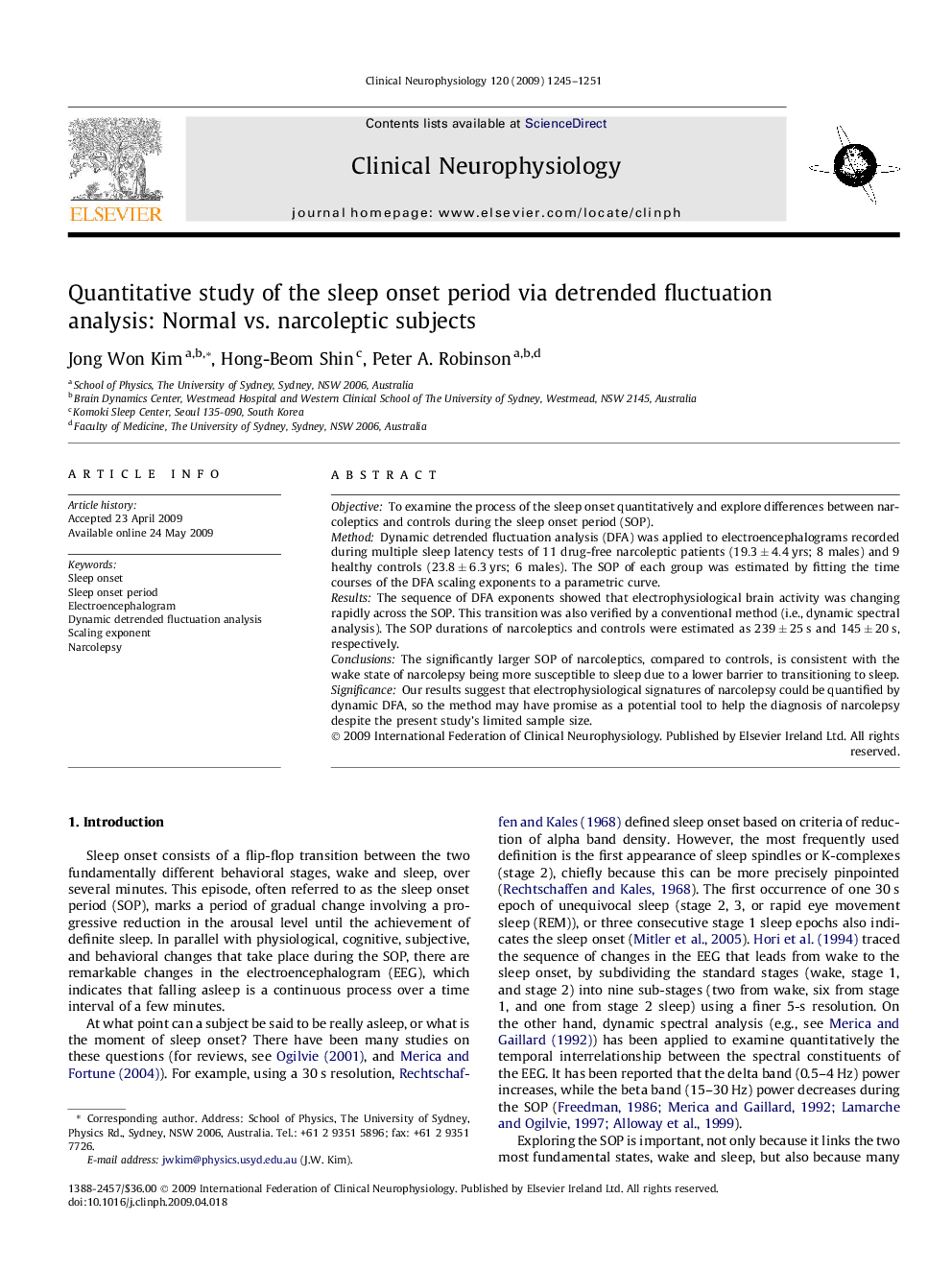| Article ID | Journal | Published Year | Pages | File Type |
|---|---|---|---|---|
| 3046556 | Clinical Neurophysiology | 2009 | 7 Pages |
ObjectiveTo examine the process of the sleep onset quantitatively and explore differences between narcoleptics and controls during the sleep onset period (SOP).MethodDynamic detrended fluctuation analysis (DFA) was applied to electroencephalograms recorded during multiple sleep latency tests of 11 drug-free narcoleptic patients (19.3±4.419.3±4.4 yrs; 8 males) and 9 healthy controls (23.8±6.323.8±6.3 yrs; 6 males). The SOP of each group was estimated by fitting the time courses of the DFA scaling exponents to a parametric curve.ResultsThe sequence of DFA exponents showed that electrophysiological brain activity was changing rapidly across the SOP. This transition was also verified by a conventional method (i.e., dynamic spectral analysis). The SOP durations of narcoleptics and controls were estimated as 239±25239±25 s and 145±20145±20 s, respectively.ConclusionsThe significantly larger SOP of narcoleptics, compared to controls, is consistent with the wake state of narcolepsy being more susceptible to sleep due to a lower barrier to transitioning to sleep.SignificanceOur results suggest that electrophysiological signatures of narcolepsy could be quantified by dynamic DFA, so the method may have promise as a potential tool to help the diagnosis of narcolepsy despite the present study’s limited sample size.
